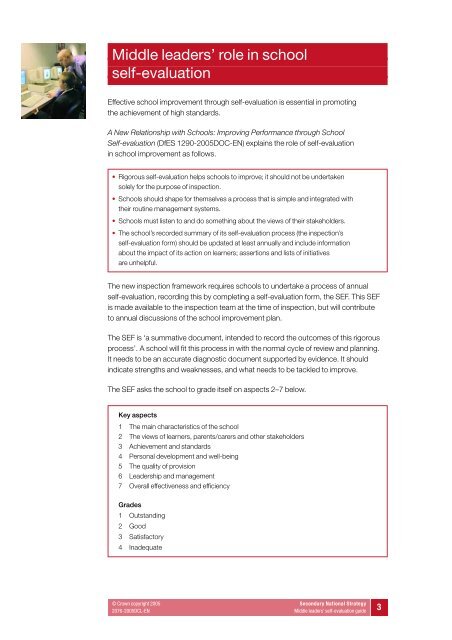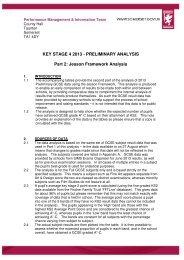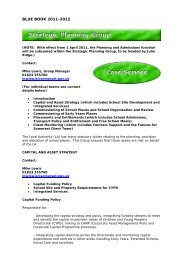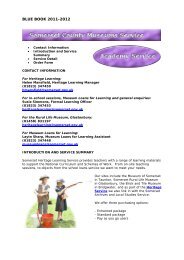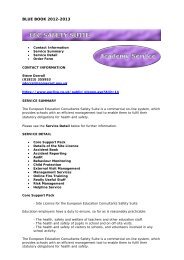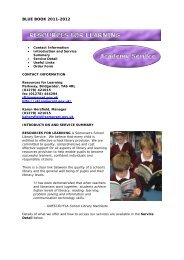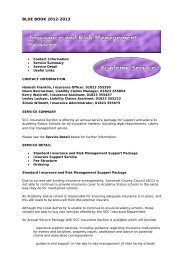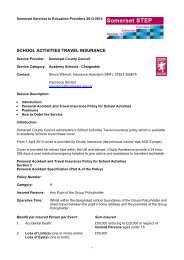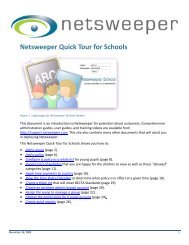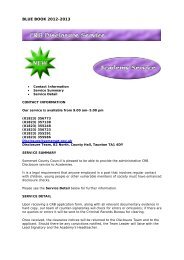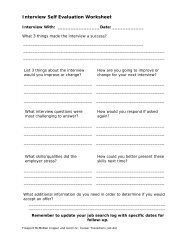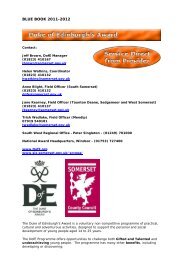Middle leaders' self-evaluation guide
Middle leaders' self-evaluation guide
Middle leaders' self-evaluation guide
Create successful ePaper yourself
Turn your PDF publications into a flip-book with our unique Google optimized e-Paper software.
<strong>Middle</strong> leaders’ role in school<br />
<strong>self</strong>-<strong>evaluation</strong><br />
Effective school improvement through <strong>self</strong>-<strong>evaluation</strong> is essential in promoting<br />
the achievement of high standards.<br />
A New Relationship with Schools: Improving Performance through School<br />
Self-<strong>evaluation</strong> (DfES 1290-2005DOC-EN) explains the role of <strong>self</strong>-<strong>evaluation</strong><br />
in school improvement as follows.<br />
• Rigorous <strong>self</strong>-<strong>evaluation</strong> helps schools to improve; it should not be undertaken<br />
solely for the purpose of inspection.<br />
• Schools should shape for themselves a process that is simple and integrated with<br />
their routine management systems.<br />
• Schools must listen to and do something about the views of their stakeholders.<br />
• The school’s recorded summary of its <strong>self</strong>-<strong>evaluation</strong> process (the inspection’s<br />
<strong>self</strong>-<strong>evaluation</strong> form) should be updated at least annually and include information<br />
about the impact of its action on learners; assertions and lists of initiatives<br />
are unhelpful.<br />
The new inspection framework requires schools to undertake a process of annual<br />
<strong>self</strong>-<strong>evaluation</strong>, recording this by completing a <strong>self</strong>-<strong>evaluation</strong> form, the SEF. This SEF<br />
is made available to the inspection team at the time of inspection, but will contribute<br />
to annual discussions of the school improvement plan.<br />
The SEF is ‘a summative document, intended to record the outcomes of this rigorous<br />
process’. A school will fit this process in with the normal cycle of review and planning.<br />
It needs to be an accurate diagnostic document supported by evidence. It should<br />
indicate strengths and weaknesses, and what needs to be tackled to improve.<br />
The SEF asks the school to grade it<strong>self</strong> on aspects 2–7 below.<br />
Key aspects<br />
1 The main characteristics of the school<br />
2 The views of learners, parents/carers and other stakeholders<br />
3 Achievement and standards<br />
4 Personal development and well-being<br />
5 The quality of provision<br />
6 Leadership and management<br />
7 Overall effectiveness and efficiency<br />
Grades<br />
1 Outstanding<br />
2 Good<br />
3 Satisfactory<br />
4 Inadequate<br />
© Crown copyright 2005 Secondary National Strategy<br />
2076-2005DCL-EN <strong>Middle</strong> leaders’ <strong>self</strong>-<strong>evaluation</strong> <strong>guide</strong> 3


